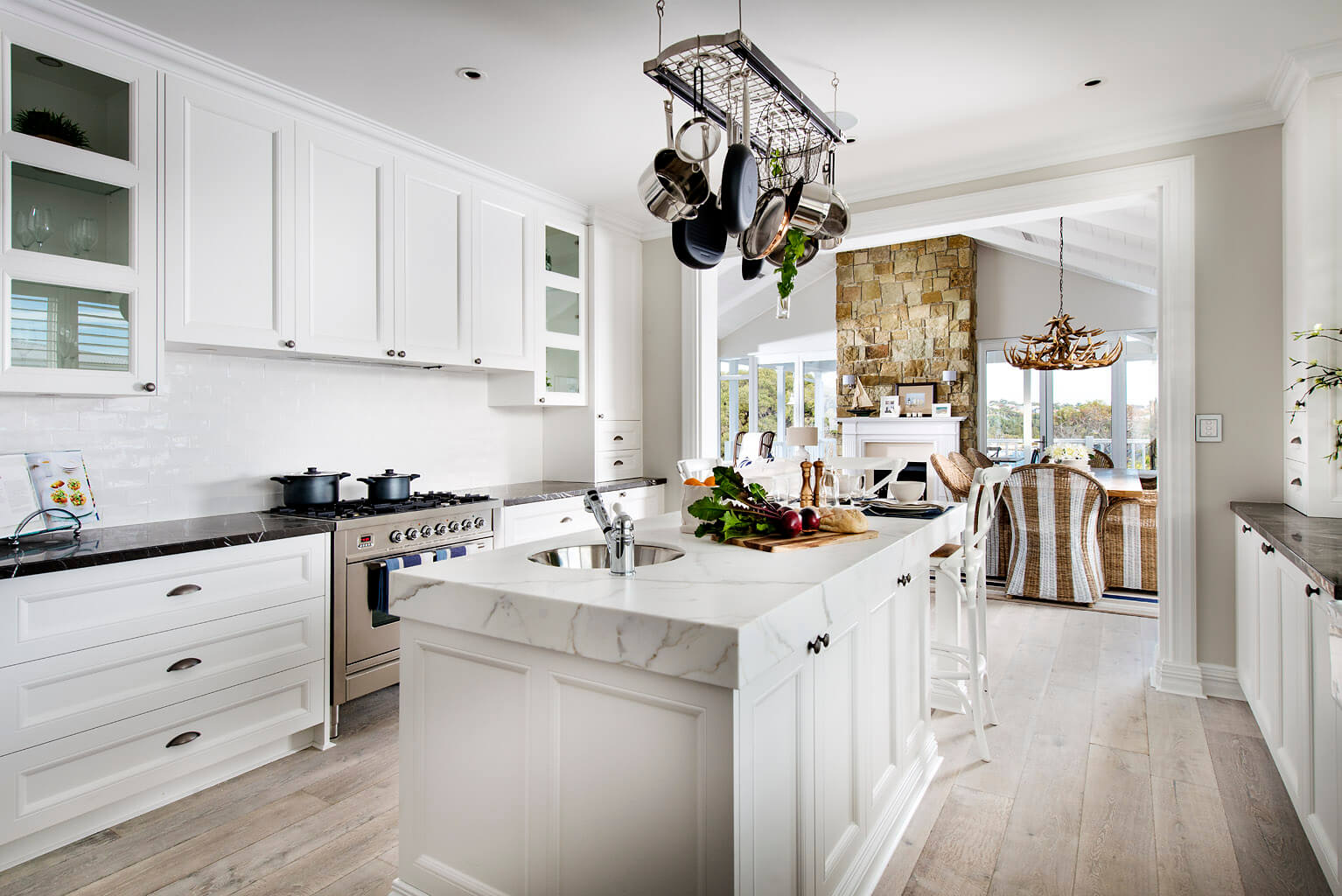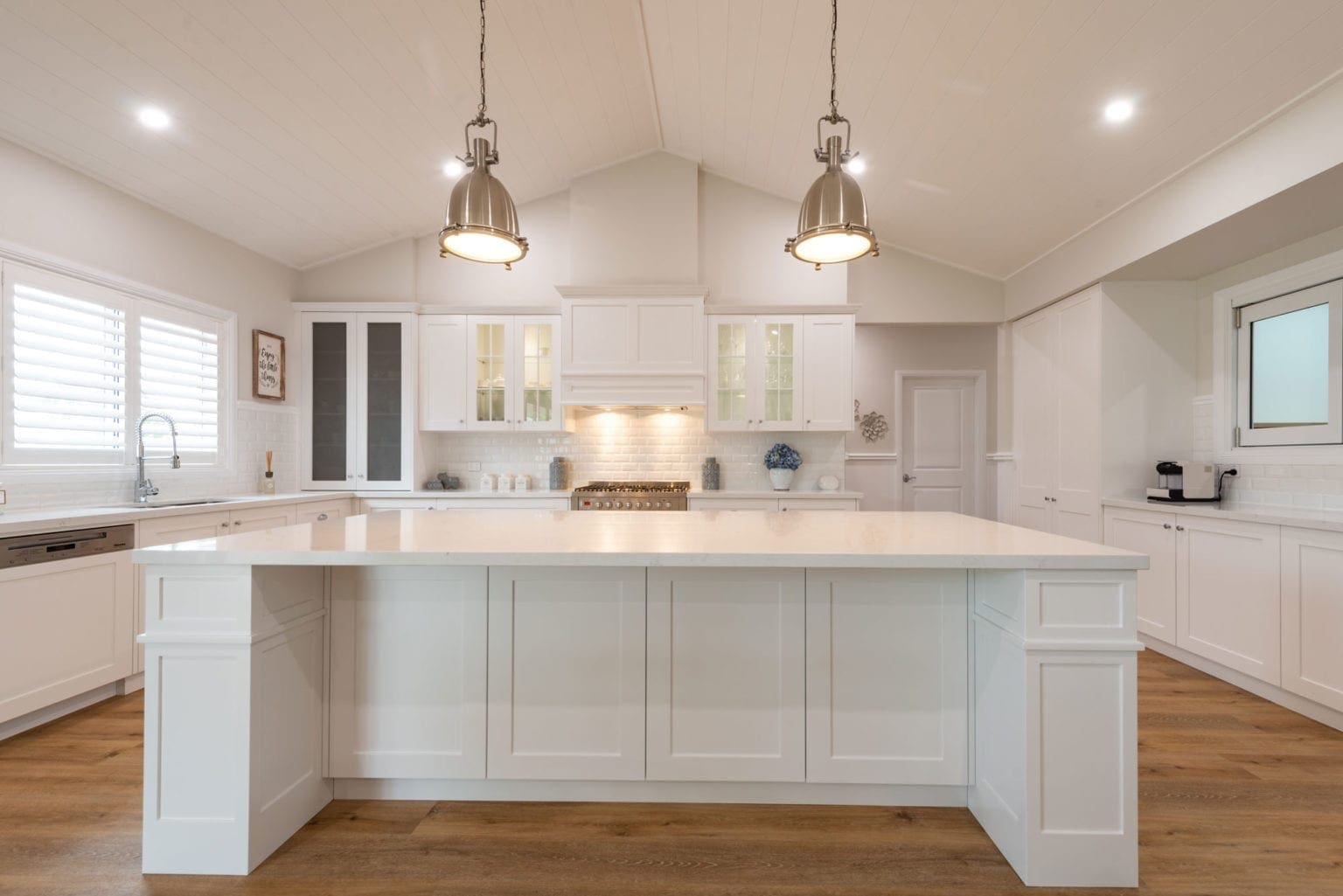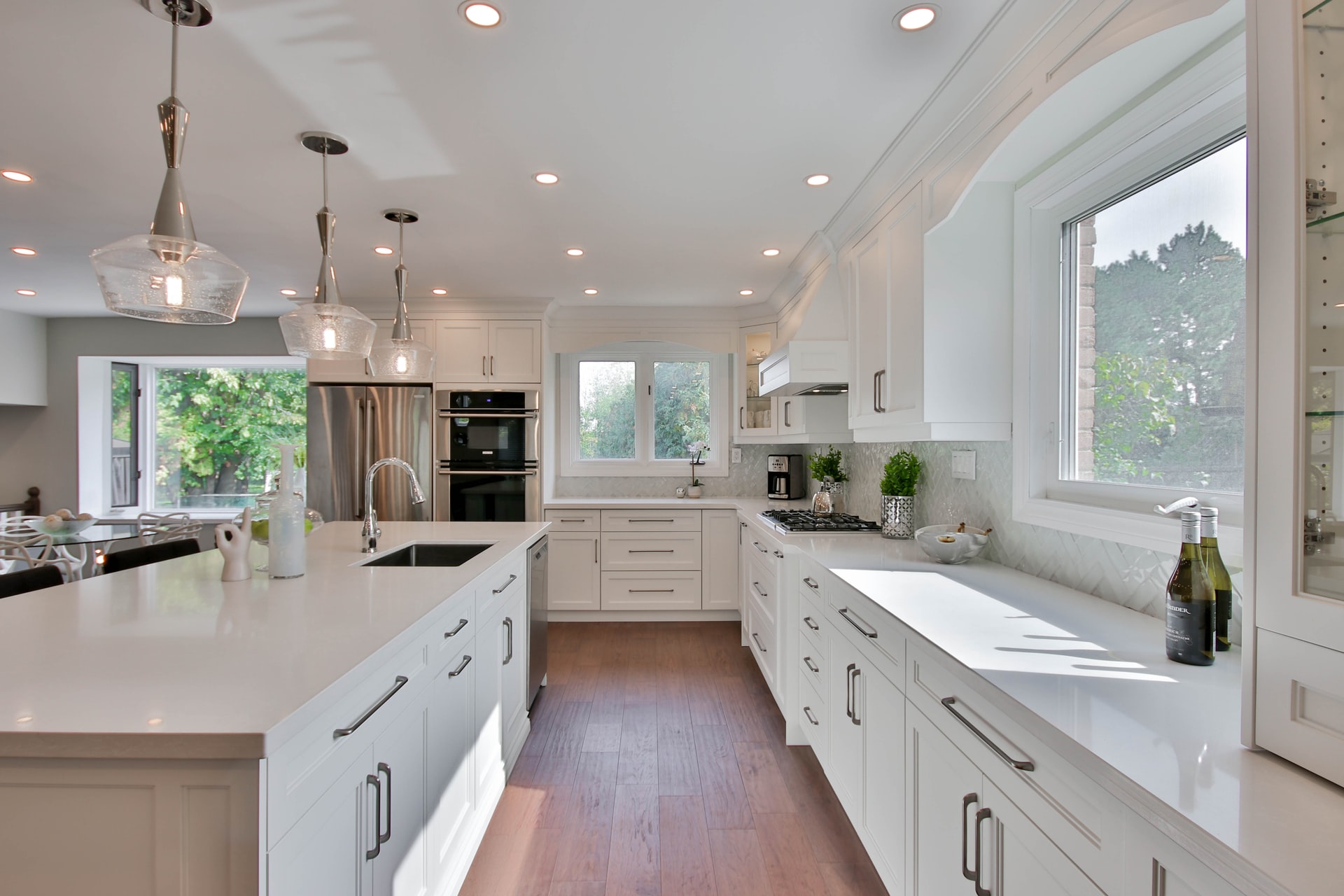Understanding Hampton Style Kitchen Cabinets

The Hampton style, synonymous with coastal elegance and relaxed sophistication, has permeated various aspects of interior design, including kitchen cabinetry. Hampton style kitchen cabinets exude a timeless charm, characterized by a blend of traditional and contemporary elements, creating a space that is both inviting and stylish.
Key Characteristics of Hampton Style Kitchen Cabinets
Hampton style kitchen cabinets are defined by their distinct design elements, materials, and finishes.
- Classic Design Elements: Hampton style cabinets often feature shaker-style doors, characterized by a simple, flat center panel framed by a raised edge. They are typically crafted with clean lines, avoiding elaborate ornamentation or intricate carvings. The focus is on simplicity and functionality, reflecting the relaxed lifestyle associated with the Hamptons.
- Natural Materials: Hampton style cabinets embrace the use of natural materials, emphasizing a connection to the coastal environment. Solid wood, particularly oak, maple, or cherry, is a popular choice for cabinet construction, adding warmth and durability to the kitchen. The wood is often left in its natural state, showcasing its unique grain patterns and textures.
- Neutral Color Palette: Hampton style cabinets typically adhere to a neutral color palette, often featuring white, cream, or gray tones. These colors create a sense of airiness and brightness, reflecting the natural light often found in coastal homes. The neutral backdrop allows for pops of color through accessories, artwork, or textiles, adding personality and visual interest to the space.
- Hardware: Hardware plays a significant role in defining the Hampton style. Simple, understated hardware, often made of nickel or brass, complements the clean lines and natural materials of the cabinets. Knobs or pulls with a traditional or farmhouse aesthetic are common choices, adding a touch of rustic charm.
- Open Shelving: Open shelving is a popular feature in Hampton style kitchens, adding visual interest and functionality. Open shelves showcase beautiful dishware or decorative items, creating a sense of openness and warmth.
Historical Overview of the Hampton Style
The Hampton style originated in the Hamptons, a group of villages located on Long Island, New York. This affluent coastal region has long been a popular summer destination for artists, writers, and socialites, who have contributed to the development of the distinctive Hampton style.
- Early Influences: The Hampton style evolved from the traditional architecture of the area, which incorporated elements of Colonial, Victorian, and Shingle styles. These early homes featured simple lines, natural materials, and a focus on functionality.
- Mid-Century Modernism: In the mid-20th century, the Hampton style embraced influences from Mid-Century Modernism, incorporating clean lines, open spaces, and a focus on natural light. This period saw the introduction of new materials, such as glass and steel, into the Hampton aesthetic.
- Contemporary Evolution: Today, the Hampton style continues to evolve, incorporating contemporary design elements while retaining its core principles of simplicity, elegance, and functionality. This evolution is reflected in the use of modern materials, such as stainless steel and quartz countertops, alongside traditional elements like wood cabinets and natural textiles.
Iconic Hampton Style Kitchens
Several iconic Hampton style kitchens showcase the distinctive features of this design aesthetic.
- The Parrish Art Museum: Located in Water Mill, New York, the Parrish Art Museum features a stunning kitchen with white shaker-style cabinets, natural wood countertops, and a large island with open shelving. The kitchen’s minimalist design and use of natural light create a serene and inviting atmosphere.
- The Southampton Showhouse: This annual event features a showcase of the latest trends in interior design, often including stunning Hampton style kitchens. The 2023 Southampton Showhouse featured a kitchen with white shaker-style cabinets, brass hardware, and a large island with a farmhouse sink. The kitchen’s combination of traditional and contemporary elements reflects the evolving Hampton style.
Design Elements and Features

The Hampton style, characterized by its coastal elegance and timeless charm, is not just about aesthetics. It’s about creating a space that feels both luxurious and inviting, reflecting a relaxed lifestyle. This style is achieved through a careful selection of design elements and features that come together to create a cohesive and sophisticated look.
Color Palettes
The Hampton style embraces a serene and calming color palette. It typically features a combination of neutral colors, often with pops of vibrant accents.
- Neutral Base: White, cream, beige, and gray are common choices for walls, ceilings, and cabinetry, providing a clean and airy backdrop.
- Warm Accents: Natural wood tones, soft blues, greens, and yellows are often incorporated as accents to add warmth and character.
- Bold Touches: While the overall palette is typically muted, bold colors like navy blue, coral, or teal can be introduced through accessories, upholstery, or artwork to create visual interest.
Materials
The materials used in Hampton style kitchens are chosen for their durability, natural beauty, and ability to create a sophisticated yet comfortable atmosphere.
- Wood Species: Oak, maple, cherry, and walnut are popular choices for cabinets, flooring, and trim. They bring a sense of warmth and character to the space.
- Hardware: Polished nickel, chrome, and brass are common finishes for cabinet hardware, faucets, and lighting fixtures. They add a touch of elegance and sophistication.
- Countertop Options: Quartz, granite, and marble are popular countertop materials for their durability and luxurious appearance. They also complement the natural wood tones found in Hampton style kitchens.
Hardware and Fixtures
Hardware and fixtures play a crucial role in defining the Hampton style aesthetic. They are often chosen for their classic design and elegant finishes.
- Handles and Pulls: Cabinet hardware typically features simple, elegant designs, often with a brushed nickel or polished brass finish. Common choices include knobs, cup pulls, or bar pulls.
- Lighting: Chandeliers, pendant lights, and sconces with a classic or nautical design are often used to illuminate Hampton style kitchens. They add a touch of sophistication and create a warm and inviting ambiance.
Architectural Details
Architectural details are essential for creating the signature look of Hampton style kitchens. They add a touch of elegance and sophistication, contributing to the overall refined aesthetic.
- Moldings: Crown molding, baseboards, and chair rails are often used to define the space and add visual interest. They create a sense of detail and sophistication.
- Paneling: Wainscoting or beadboard paneling can be used to add texture and visual interest to walls, creating a classic and timeless look.
Key Design Elements and Features
| Element | Description |
|---|---|
| Color Palette | Neutral base with warm accents and pops of bold color |
| Materials | Natural wood species, polished hardware, durable countertops |
| Hardware | Simple, elegant designs with classic finishes |
| Lighting | Classic or nautical chandeliers, pendant lights, and sconces |
| Architectural Details | Crown molding, baseboards, chair rails, wainscoting, beadboard paneling |
Inspiration and Design Ideas

Drawing inspiration from the classic elegance of coastal homes, Hampton style kitchen design offers a timeless and sophisticated aesthetic. This style embraces a harmonious blend of traditional and contemporary elements, creating a welcoming and functional space that is both stylish and practical. To achieve the desired look, it’s essential to understand the key design principles and explore various inspirational examples that showcase the versatility and beauty of Hampton style kitchens.
Examples of Hampton Style Kitchen Layouts, Hampton style kitchen cabinets
Hampton style kitchen layouts often feature open floor plans that seamlessly connect the kitchen with other living areas, fostering a sense of spaciousness and flow. The layout typically incorporates a central island, providing ample counter space for food preparation and casual dining.
Here are some common elements found in Hampton style kitchen layouts:
- Island Configurations: Islands are a staple in Hampton style kitchens. They can be rectangular, square, or even curved, depending on the available space and the desired aesthetic. Islands often include seating for casual dining, creating a social hub within the kitchen.
- Cabinet Arrangements: Cabinetry is typically designed with a focus on functionality and visual appeal. Shaker-style cabinets with raised panels are a popular choice, offering a classic and timeless look. Cabinets are often arranged in a symmetrical fashion, creating a sense of balance and order.
- Appliance Placement: Appliances are carefully integrated into the overall design, blending seamlessly with the cabinetry. Built-in ovens, refrigerators, and dishwashers are common choices, maximizing space and creating a streamlined look.
Incorporating Hampton Style Elements into Existing Kitchens
Updating or renovating an existing kitchen to reflect the Hampton style involves incorporating specific design elements that create the desired aesthetic. This can be achieved through a combination of changes, including:
- Cabinet Refacing: Refacing existing cabinets with shaker-style doors and drawer fronts can instantly transform the look of the kitchen. This cost-effective option allows you to maintain the existing cabinet structure while achieving a new style.
- Countertop Upgrades: Replacing outdated countertops with materials that embody the Hampton style, such as marble, granite, or quartz, can elevate the kitchen’s elegance. Consider a light-colored stone with subtle veining for a classic and sophisticated touch.
- Hardware and Finishes: Replacing existing hardware with polished nickel or brass pulls and knobs can add a touch of refinement. Consider using brushed nickel or oil-rubbed bronze for a more rustic and traditional feel.
- Lighting Fixtures: Updating lighting fixtures with pendant lights or chandeliers in a traditional style can enhance the ambiance and create a focal point in the kitchen.
Color, Texture, and Pattern in Hampton Style Kitchens
The color palette in Hampton style kitchens often draws inspiration from the natural surroundings of coastal areas. Light and airy colors, such as white, cream, and pale blue, are frequently used to create a sense of spaciousness and tranquility. These colors are often complemented by accents of navy, gray, or green, adding depth and visual interest.
- White: White is a dominant color in Hampton style kitchens, providing a clean and crisp backdrop for other design elements. It reflects light, creating a bright and airy atmosphere. White cabinets, walls, and countertops are common features.
- Cream: Cream adds warmth and sophistication to the space, while still maintaining a light and airy feel. It complements white beautifully and can be used for cabinets, walls, or even upholstery.
- Pale Blue: Pale blue evokes the serenity of the ocean and sky, creating a calming and refreshing ambiance. It can be used for accent walls, furniture, or accessories.
Hampton Style Kitchen Layout Design
This table showcases a sample Hampton style kitchen layout, featuring a combination of design elements that create a harmonious and functional space:
| Column 1 | Column 2 | Column 3 | Column 4 |
|---|---|---|---|
| Cabinet Placement | Countertop Materials | Appliance Selections | Design Inspiration |
| Shaker-style cabinets in white with brushed nickel hardware. Upper cabinets extend to the ceiling, maximizing storage space. | White marble countertops with subtle veining. | Stainless steel appliances with integrated refrigerator and dishwasher. | A spacious kitchen with a large island, white cabinets, and a white marble countertop. The island features seating for casual dining. |
| Island with seating for four, featuring a butcher block countertop for added warmth and functionality. | Butcher block countertop on the island for food preparation and casual dining. | Double oven and a built-in microwave for ample cooking space. | A smaller kitchen with a compact island and a mix of white and gray cabinets. The island features a butcher block countertop and a farmhouse sink. |
| Open shelving for displaying decorative items and showcasing cookbooks. | White quartz countertops for durability and low maintenance. | Professional-grade appliances with a gas range for avid cooks. | A contemporary Hampton style kitchen with a large island, white cabinets, and a quartz countertop. The island features a built-in wine cooler and a bar sink. |
Hampton style kitchen cabinets are known for their classic elegance, often featuring traditional details like raised panel doors and intricate moldings. The warm tones of cherry wood, often paired with the subtle sheen of brushed nickel hardware, cherry cabinets with brushed nickel hardware , complement the overall aesthetic beautifully.
This combination creates a timeless and sophisticated look that seamlessly blends with the traditional charm of Hampton style kitchens.
Hampton style kitchen cabinets are renowned for their classic elegance and timeless appeal, often featuring raised panel doors and intricate details. While these cabinets are typically associated with traditional kitchens, their design principles can inspire DIY projects beyond the culinary realm.
For example, the construction techniques employed in building a diy biltong drying cabinet can be adapted to create a custom storage solution for kitchen essentials, maintaining the same craftsmanship and aesthetic as a Hampton-style cabinet.
